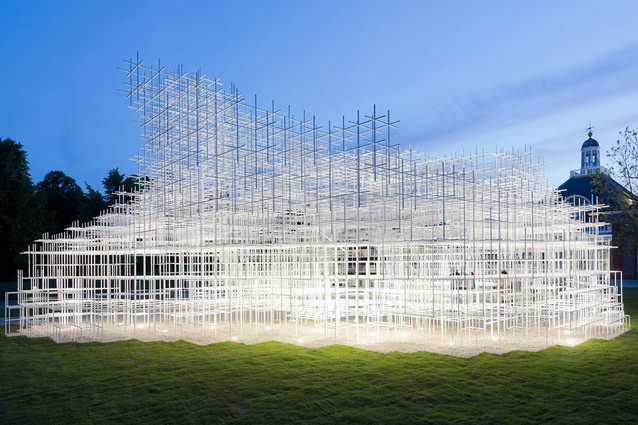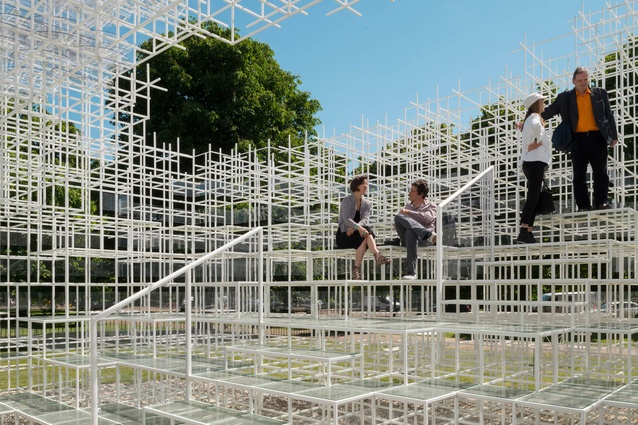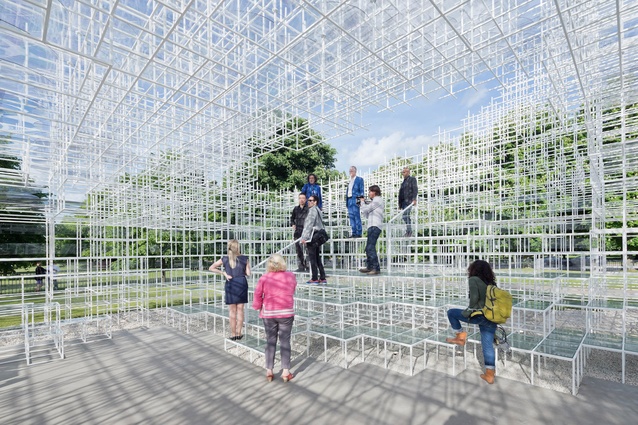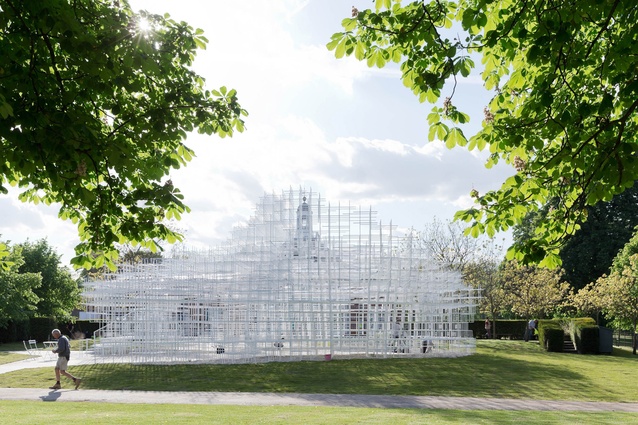Blurring spatial boundaries
Colin Martin reviews the Serpentine Pavilion in London by Japanese architect Sou Fujimoto.
Despite its relatively modest spatial footprint in Kensington Gardens, the Serpentine Gallery has an international reputation for curating exhibitions of great interest and quality. In 2000, its director Julia Peyton-Jones initiated an annual commission, for an internationally renowned architect, who had not previously completed a building in the UK, to design a temporary pavilion to be erected adjacent to the gallery for three months each summer. Zaha Hadid designed the first, followed by other architects of equivalent stature.

In 2013, the design honours went to the Japanese architect Sou Fujimoto, whose delicate pavilion is anchored lightly within the surrounding parkland. Like the 2009 pavilion designed by Kazuyo Sejima and Ryue Nishizawa of SANAA, it is ‘barely there’, both transparent and reflective. “I have created a translucent architecture,” says Fujimoto. “The vivid greenery surrounding the site merges with the constructed geometry of the pavilion.”
Its structural matrix comprises 800mm and 400mm grid units made from fine, white-painted 20mm-diameter steel rods, configured to form the pavilion’s walls, stepped seating for visitors, and an irregular canopy of 1,200mm and 600mm polycarbonate discs. Visitors are sheltered from capricious summer weather while retaining the feeling of still being outdoors in the surrounding gardens. The pavilion footprint is 357m2, with a gross internal area of 142m2; its ceiling height varies between 2.4 and 4.4m. Variations in the depth of the grid around the pavilion’s perimeter create thicker, less-translucent walls and thinner, more transparent sections.
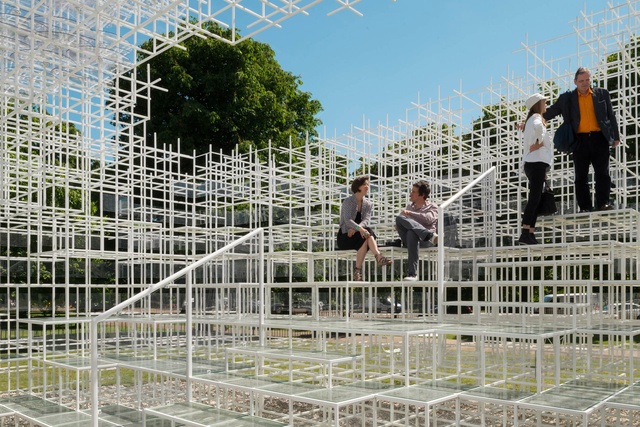
In 2009, Fujimoto was one of 19 architects whom the Victoria & Albert Museum invited to present proposals for structures that examined the notions of refuge and retreat. His Silent Gardens consisted of 11 transparent acrylic boxes, filled with botanical forms meticulously reproduced in plastic, haphazardly stacked on top of each other. The apparent spontaneity of his arrangement subverted the boxes’ formal geometry and created informal, blurred thresholds between them. The similar spatial configuration within his 2013 pavilion invites visitors to explore its space and inhabit it both physically and emotionally. “From certain vantage points, the fragile cloud of the pavilion appears to merge with the classical structure of the gallery, the visitors within suspended in the space between architecture and nature,” says Fujimoto. Others have commented on having experienced perceptual shifts when moving around within the pavilion, fluctuating between solidity and void space. Certainly, descending from the top of the terraced seating requires careful attention.
With its second permanent building, the Serpentine Sackler Gallery, scheduled to open in September 2013, it is a landmark year for the Serpentine Gallery. Also designed by Hadid, its new gallery is a conversion of a former gunpowder store (built 1805), located five minutes’ walk from the existing gallery. More art with a bang seems guaranteed in Kensington Gardens in 2014, with two permanent galleries. Now that Cromwell Road, linking the Victoria & Albert, Natural History & Science Museums with the Serpentine Gallery, is partially pedestrianised, annual pavilion visitor numbers look set to exceed 300,000 in the future.
Sou Fujimoto’s Serpentine Gallery Pavilion, London, is open until 20 October 2013. The Serpentine Sackler Gallery by Zaha Hadid Architects opens to the public on Saturday, 28 September 2013.
Designed by Pritzker Architecture Prize laureate Zaha Hadid, the gallery is her practice’s first permanent structure in central London. The light and transparent extension links to the neo-classical architecture of the original building, known as The Magazine.

